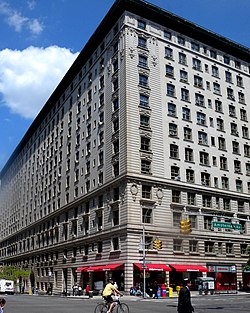| German Broadway | |
 Looking west on East 86th Street near Third Avenue | |
 | |
| Maintained by | NYCDOT |
|---|---|
| Length | 1.6 mi (2.6 km) [1] |
| Width | 100 feet (30.48 m) |
| Location | Manhattan |
| Postal code | 10024 (west), 10028 (east) |
| Coordinates | 40°46′40″N73°57′06″W / 40.777877°N 73.951741°W |
| West end | Riverside Drive in Upper West Side |
| East end | East End Avenue in Yorkville |
| North | 87th Street |
| South | 85th Street |
| Construction | |
| Commissioned | 1811 |
86th Street is a major two-way street on the Upper East Side and Upper West Side of the New York City borough of Manhattan. It runs in two major sections: between East End and Fifth Avenue on the Upper East Side, and between Central Park West and Riverside Drive on the Upper West Side. The western segment feeds into the 86th Street transverse across Central Park, which connects to East 84th and 85th Streets on the eastern side.
Contents
On the West Side, its continuous cliff-wall of apartment blocks including The Belnord and the Orwell House is broken by two contrasting landmarked churches at prominent corner sites, the Tuscan Renaissance Saints Paul and Andrew United Methodist Church at the corner of West End Avenue, and the rusticated brownstone Romanesque Revival West-Park Presbyterian Church at the corner of Amsterdam Avenue.



